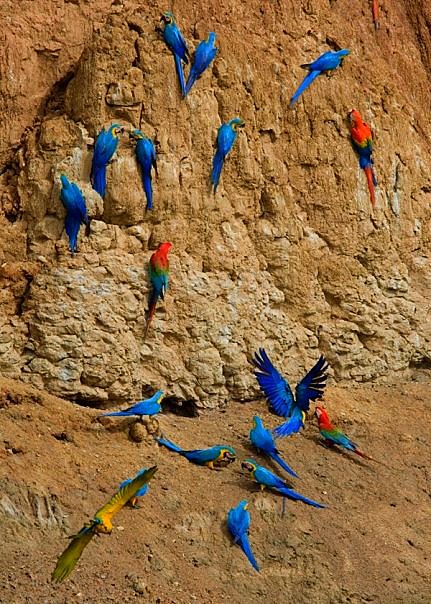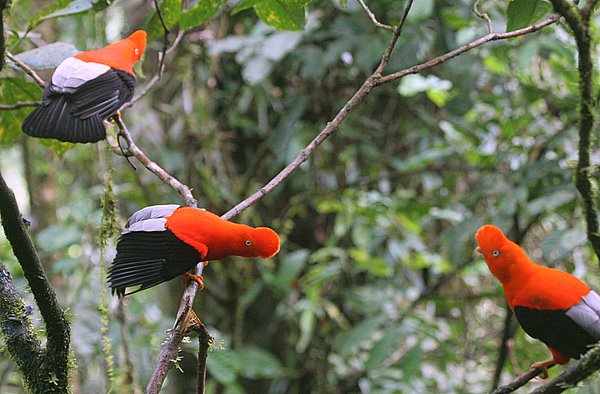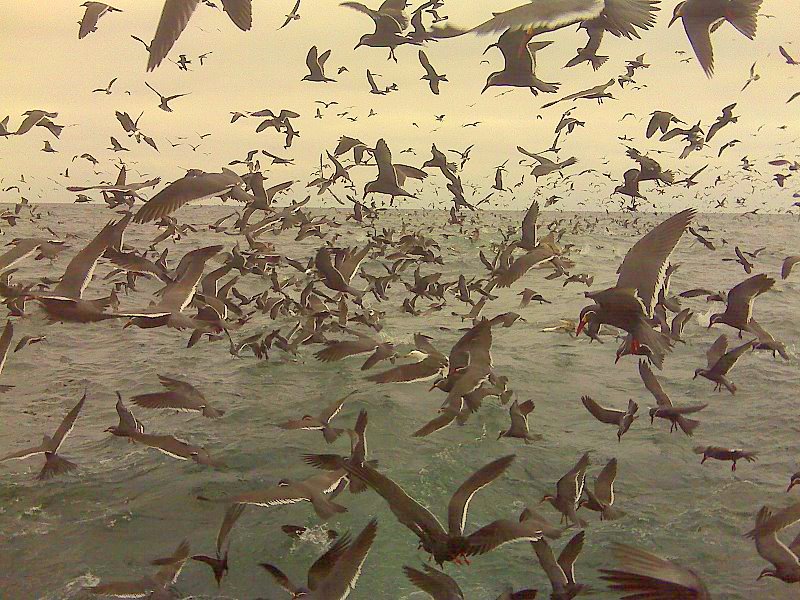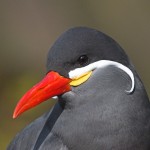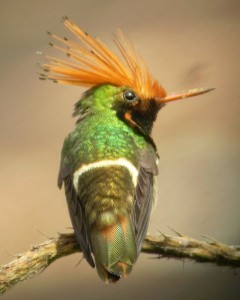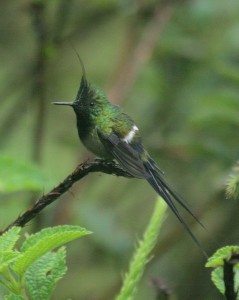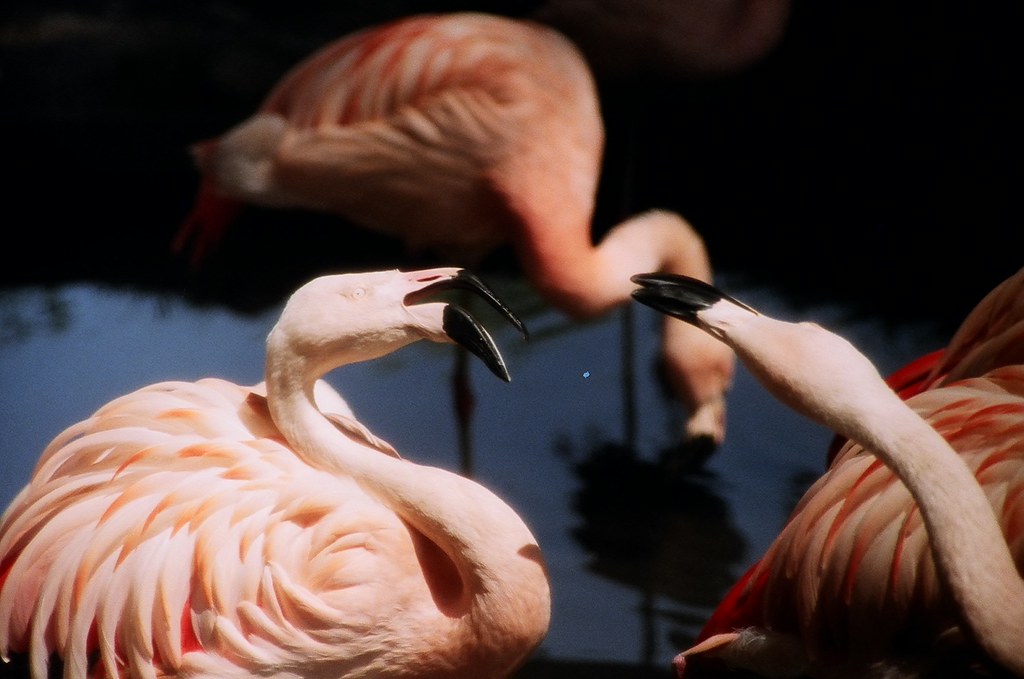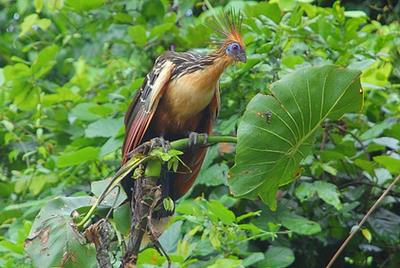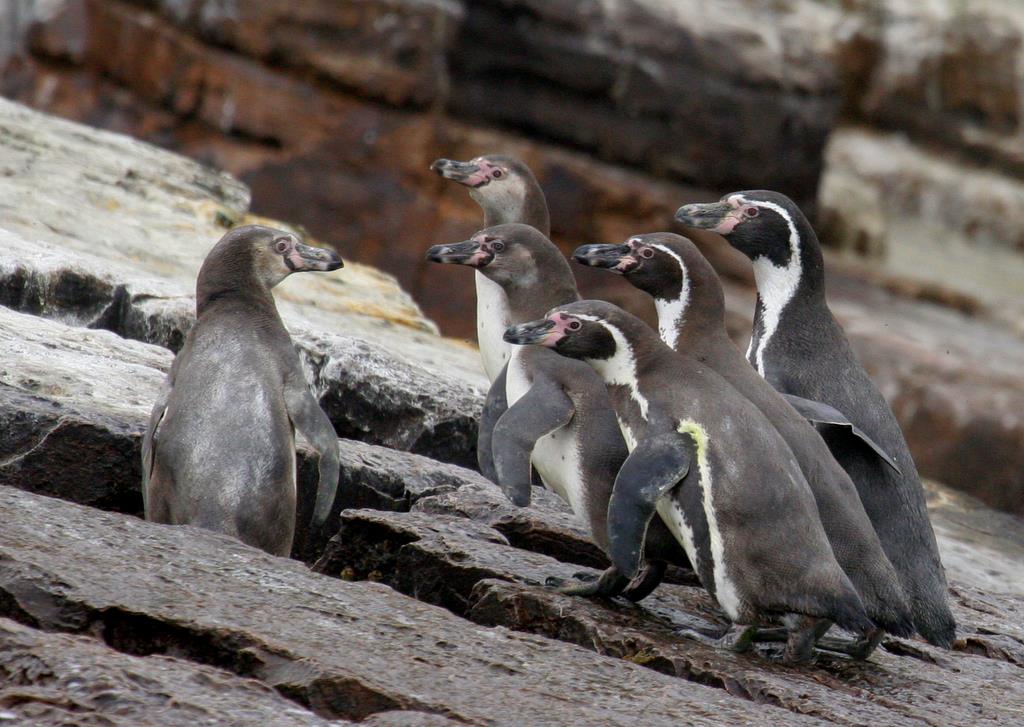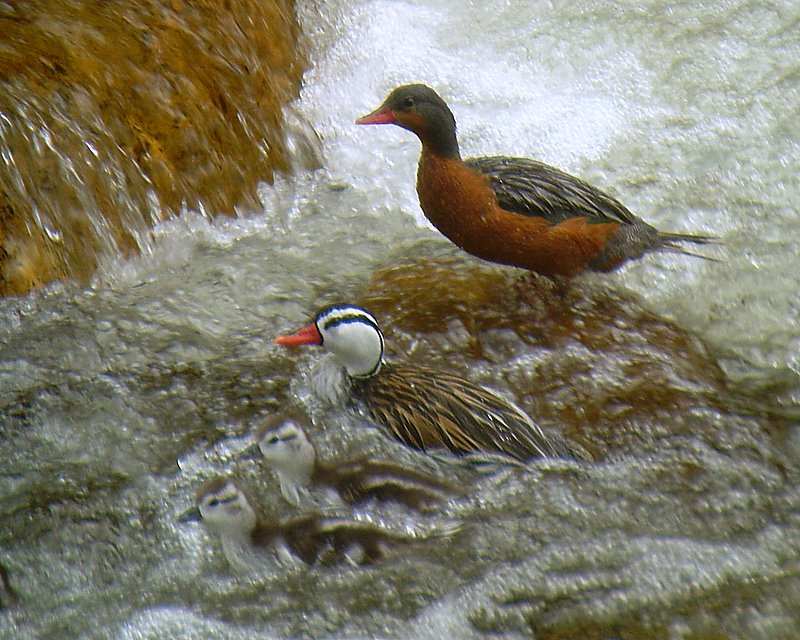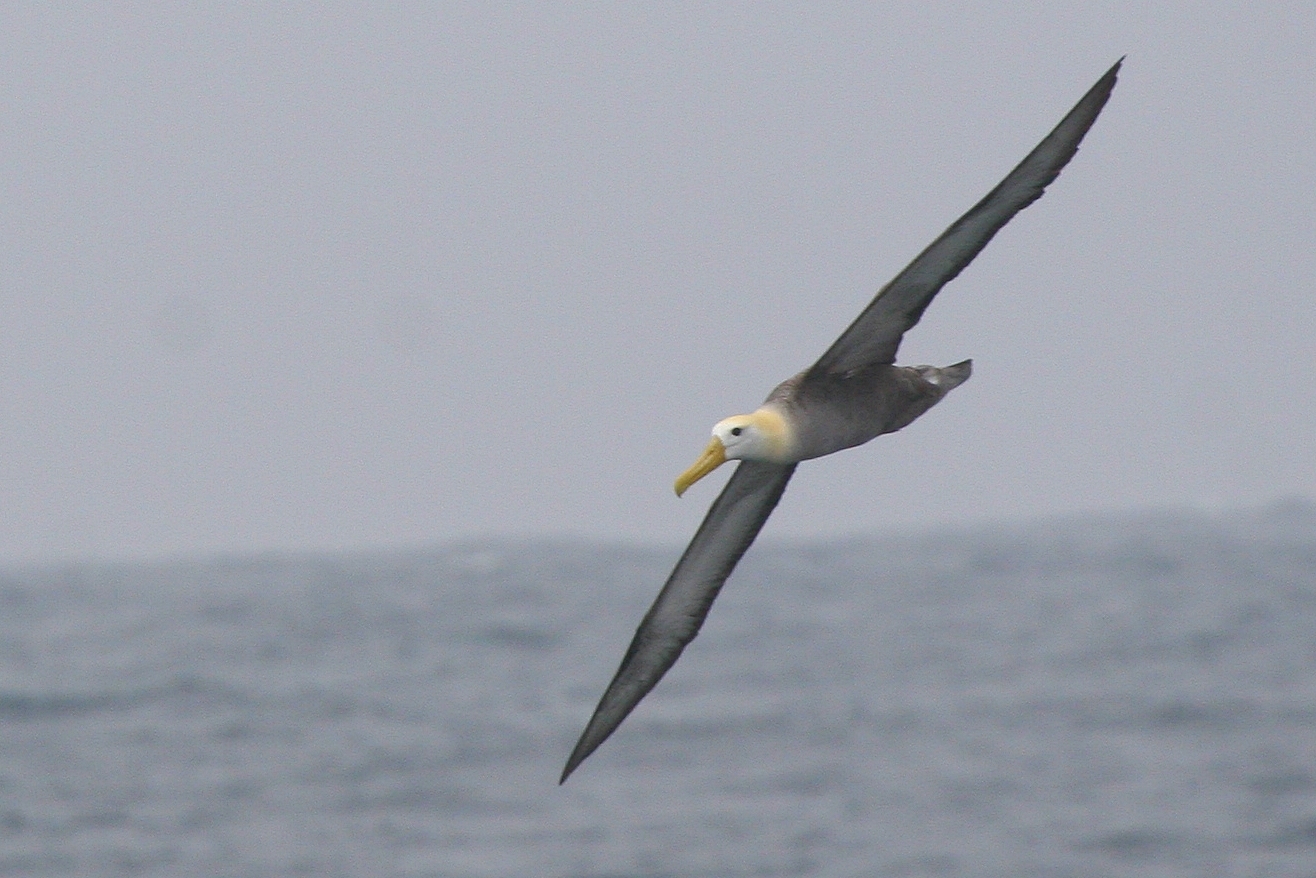The ultimate birdlist this week

A new delivery of your favorite birding carnival is a all about listing birds. Nick of Biological Ramblings has ordered the postings both in a narrative manner like a trip report and ending it in a check list containing no less than 190 species of 65 families. What is more, this issue of “I and the birds” is submitted to the Friday Ark #239. What could be more fitting?
Here is the complete list. For the actual reading, well jump over to Biological Ramblings now!
Casuariidae (Cassowaries)
Southern Cassowary (Casuarius casuarius)
Odontophoridae (New World Quail)
Gambel’s Quail (Callipepla gambelii)
Phasianidae (Grouse)
Chicken (Gallus gallus)
Anatidae (Ducks, Geese, and Swans)
Greylag Goose (Anser anser)
Canada Goose (Branta canadensis)
Mute Swan (Cygnus olor)
Torrent Duck (Merganetta armata)
Northern Shoveler (Anas clypeata)
Blue-winged Teal (Anas discors)
Mallard (Anas platyrhynchos)
Common Pochard (Aythya ferina)
Spheniscidae (Penguins)
Humboldt Penguin (Spheniscus humboldti)
Diomedeidae (Albatrosses)
Waved Albatross (Phoebastria irrorata)
Antipodean Albatross (Diomedea antipodensis)
Black-browed Albatross (Thalassarche melanophrys)
Shy Mollymawk (Thalassarche cauta)
Chatham Island Albatross (Thalassarche eremita)
Salvin’s Albatross (Thalassarche salvini)
Procellariidae (Petrels)
Northern Giant Petrel (Macronectes halli)
Cape Petrel (Daption capense)
White-chinned Petrel (Procellaria aequinoctialis)
Westland Petrel (Procellaria westlandica)
Buller’s Shearwater (Puffinus bulleri)
Sooty Shearwater (Puffinus griseus)
Hutton’s Shearwater (Puffinus huttoni)
Podicipedidae (Grebes)
Pied-billed Grebe (Podilymbus podiceps)
Phoenicopteridae (Flamingos)
Chilean Flamingo (Phoenicopterus chilensis)
Ciconiidae (Storks)
White Stork (Ciconia ciconia)
Threskiornithidae (Ibises and Spoonbills)
White Ibis (Eudocimus albus)
White-faced Ibis (Plegadis chihi)
Ardeidae (Herons)
American Bittern (Botaurus lentiginosus)
Black-crowned Night-Heron (Nycticorax nycticorax)
Yellow-crowned Night-Heron (Nycticorax violaceus)
Great Egret (Ardea alba)
Great Blue Heron (Ardea herodias)
Little Blue Heron (Egretta caerulea)
Snowy Egret (Egretta thula)
Tricolored Heron (Egretta tricolor)
Pelecanidae (Pelicans)
White Pelican (Pelecanus erythrorhynchos)
Phalacrocoracidae (Cormorants)
Double-crested Cormorant (Phalacrocorax auritus)
Cathartidae (New World Vultures)
Turkey Vulture (Cathartes aura)
Andean Condor (Vultur gryphus)
Falconidae (Falcons)
Peregrine Falcon (Falco peregrinus)
Accipitridae (Hawks)
Northern Harrier (Circus cyaneus)
Red-shouldered Hawk (Buteo lineatus)
Broad-winged Hawk (Buteo platypterus)
Rallidae (Rails)
American Coot (Fulica americana)
Recurvirostridae (Stilts and Avocets)
American Avocet (Recurvirostra americana)
Thinocoridae (Seedsnipe)
Rufous-bellied Seedsnipe (Attagis gayi)
Laridae (Gulls and Terns)
Inca Tern (Larosterna inca)
Herring Gull (Larus argentatus)
Columbidae (Doves and Pigeons)
White-crowned Pigeon (Patagioenas leucocephala)
Eurasian Collared-Dove (Streptopelia decaocto)
White-winged Dove (Zenaida asiatica)
Mourning Dove (Zenaida macroura)
Inca Dove (Columbina inca)
Psittacidae (Parrots)
Blue-and-gold Macaw (Ara ararauna)
Black-hooded Parakeet (Nandayus nenday)
Opisthocomidae (Hoatzin)
Hoatzin (Opisthocomus hoazin)
Cuculidae (Cuckoos)
Mangrove Cuckoo (Coccyzus minor)
Common Cuckoo (Cuculus canorus)
Podargidae (Frogmouths)
Sri Lanka Frogmouth (Batrachostomus moniliger)
Apodidae (Swifts)
Common Swift (Apus apus)
Trochilidae (Hummingbirds)
Long-billed Hermit (Phaethornis longirostris)
Stripe-throated Hermit (Phaethornis striigularis)
Violet Sabrewing (Campylopterus hemileucurus)
Cuban Emerald (Chlorostilbon ricordii)
Stripe-tailed Hummingbird (Eupherusa eximia)
Violet-crowned Woodnymph (Thalurania colombica)
Rufous-tailed Hummingbird (Amazilia tzacatl)
Black-tailed Trainbearer (Lesbia victoriae)
Marvellous Spatuletail (Loddigesia mirabilis)
Black-chinned Hummingbird (Archilochus alexandri)
Ruby-throated Hummingbird (Archilochus colubris)
Trogonidae (Trogons)
Collared Trogon (Trogon collaris)
Alcedinidae (Kingfishers)
White-throated Kingfisher (Halcyon smyrnensis)
Belted Kingfisher (Megaceryle alcyon)
Ramphastidae (Toucans)
Keel-billed Toucan (Ramphastos sulfuratus)
Picidae (Woodpeckers)
Red-bellied Woodpecker (Melanerpes carolinus)
Downy Woodpecker (Picoides pubescens)
Ladder-backed Woodpecker (Picoides scalaris)
Northern Flicker (Colaptes auratus)
Cotingidae (Cotingas)
Andean Cock-of-the-Rock (Rupicola peruvianus)
Tyrannidae (Tyrant Flycatchers)
Eastern Phoebe (Sayornis phoebe)
Yellow-bellied Flycatcher (Empidonax flaviventris)
Paramo Ground-Tyrant (Muscisaxicola alpinus)
Brown-backed Chat-Tyrant (Ochthoeca fumicolor)
Scissor-tailed Flycatcher (Tyrannus forficatus)
Eastern Kingbird (Tyrannus tyrannus)
Great Crested Flycatcher (Myiarchus crinitus)
Thamnophilidae (Antbirds)
Peruvian Warbling Antbird (Hypocnemis peruviana)
Sao Paulo Antwren (Stymphalornis sp.)
Furnariidae (Ovenbirds)
Stout-billed Cinclodes (Cinclodes excelsior)
White-chinned Thistletail (Schizoeaca fuliginosa)
Dendrocolaptidae (Woodcreepers)
Cocoa Woodcreeper (Xiphorhynchus susurrans)
Meliphagidae (Honeyeaters)
Yellow-faced Honeyeater (Lichenostomus chrysops)
Acanthizidae (Thornbills)
White-browed Scrubwren (Sericornis frontalis)
Cracticidae (Butcherbirds)
Australian Magpie (Gymnorhina tibicen)
Laniidae (Shrikes)
Loggerhead Shrike (Lanius ludovicianus)
Vireonidae (Vireos)
Rufous-browed Peppershrike (Cyclarhis gujanensis)
White-eyed Vireo (Vireo griseus)
Yellow-throated Vireo (Vireo flavifrons)
Red-eyed Vireo (Vireo olivaceus)
Blue-headed Vireo (Vireo solitarius)
Rhipiduridae (Fantails)
Grey Fantail (Rhipidura fuliginosa)
Corvidae (Crows and Jays)
Blue Jay (Cyanocitta cristata)
Western Scrub-Jay (Aphelocoma californica)
Common Raven (Corvus corax)
Carrion Crow (Corvus corone)
Jackdaw (Corvus monedula)
Paridae (Tits)
Black-crested Titmouse (Baeolophus atricristatus)
Great Tit (Parus major)
Carolina Chickadee (Poecile carolinensis)
Hirundinidae (Swallows)
Purple Martin (Progne subis)
Northern Rough-winged Swallow (Stelgidopteryx serripennis)
Alaudidae (Larks)
Horned Lark (Eremophila alpestris)
Sylviidae (Old World Warblers)
Sedge Warbler (Acrocephalus schoenobaenus)
Whitethroat (Sylvia communis)
Zosteropidae (White-eyes)
Silvereye (Zosterops lateralis)
Regulidae (Kinglets)
Ruby-crowned Kinglet (Regulus calendula)
Golden-crowned Kinglet (Regulus satrapa)
Troglodytidae (Wrens)
Marsh Wren (Cistothorus palustris)
Bewick’s Wren (Thryomanes bewickii)
Carolina Wren (Thryothorus ludovicianus)
Spot-breasted Wren (Thryothorus maculipectus)
White-breasted Wood-Wren (Henicorhina leucosticta)
Polioptilidae (Gnatcatchers)
Blue-Gray Gnatcatcher (Polioptila caerulea)
Sittidae (Nuthatches)
Red-breasted Nuthatch (Sitta canadensis)
Certhiidae (Creepers)
Brown Creeper (Certhia americana)
Mimidae (Mockingbirds)
Gray Catbird (Dumetella carolinensis)
Northern Mockingbird (Mimus polyglottos)
Brown Thrasher (Toxostoma rufum)
Sturnidae (Starlings)
European Starling (Sturnus vulgaris)
Turdidae (Thrushes)
Eastern Bluebird (Sialia sialis) –
Hermit Thrush (Catharus guttatus)
Black-headed Nightingale-Thrush (Catharus mexicanus)
Wood Thrush (Hylocichla mustelina)
American Robin (Turdus migratorius)
Red-legged Thrush (Turdus plumbeus)
Nectariniidae (Sunbirds)
Purple-throated Sunbird (Nectarinia sperata)
Passeridae (Sparrows)
House Sparrow (Passer domesticus)
Fringillidae (Finches)
Pine Siskin (Carduelis pinus)
Lesser Goldfinch (Carduelis psaltria)
American Goldfinch (Carduelis tristis)
House Finch (Carpodacus mexicanus)
Elegant Euphonia (Euphonia elegantissima)
Parulidae (Wood-Warblers)
Orange-crowned Warbler (Vermivora celata)
Tennessee Warbler (Vermivora peregrina)
Blue-winged Warbler (Vermivora pinus)
Northern Parula (Parula americana)
Yellow-rumped Warbler (Dendroica coronata)
Yellow-throated Warbler (Dendroica dominica)
Palm Warbler (Dendroica palmarum)
Chestnut-sided Warbler (Dendroica pensylvanica)
Pine Warbler (Dendroica pinus)
Black-throated Green Warbler (Dendroica virens)
Black-and-white Warbler (Mniotilta varia)
Kentucky Warbler (Oporornis formosus)
Worm-eating Warbler (Helmitheros vermivorum)
Common Yellowthroat (Geothlypis trichas)
Ovenbird (Seiurus aurocapillus)
Louisiana Waterthrush (Seiurus motacilla)
Northern Waterthrush (Seiurus noveboracensis)
Hooded Warbler (Wilsonia citrina)
Wilson’s Warbler (Wilsonia pusilla)
Yellow-breasted Chat (Icteria virens)
Icteridae (Blackbirds)
Hooded Oriole (Icterus cucullatus)
Baltmore Oriole (Icterus galbula)
Orchard Oriole (Icterus spurius)
Brown-headed Cowbird (Molothrus ater)
Red-winged Blackbird (Agelaius phoeniceus)
Rusty Blackbird (Euphagus carolinus)
Boat-tailed Grackle (Quisculus major)
Great-tailed Grackle (Quisculus mexicanus)
Common Grackle (Quisculus quiscula)
Emberizidae (Sparrows)
Swamp Sparrow (Melospiza georgiana)
Song Sparrow (Melospiza melodia)
California Towhee (Pipilo crissalis)
Spotted Towhee (Pipilo maculatus)
Chipping Sparrow (Spizella passerina)
Golden-crowned Sparrow (Zonotrichia atricapilla)
White-crowned Sparrow (Zonotrichia leucophrys)
Thraupidae (Tanagers)
Crimson-collared Tanager (Ramphocelus sanguinolentus)
Cardinalidae (Grosbeaks)
Rose-breasted Grosbeak (Pheucticus ludovicianus)
Northern Cardinal (Cardinalis cardinalis)
Summer Tanager (Piranga rubra)
Blue Grosbeak (Passerina caerulea)
Painted Bunting (Passerina ciris)
Indigo Bunting (Passerina cyanea)
Blue Bunting (Cyanocompsa parellina)

 Hey, Ashton.
Hey, Ashton.



